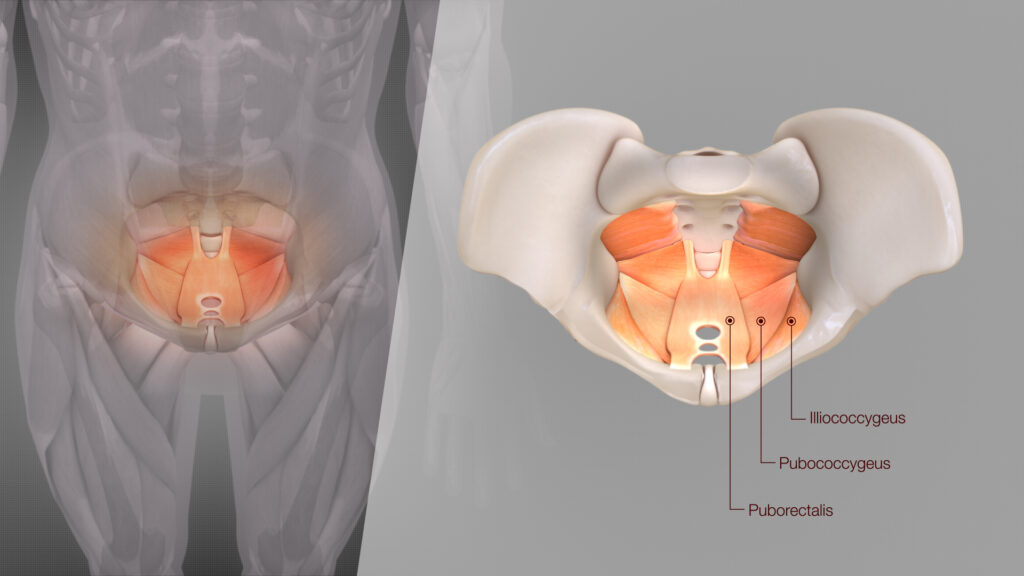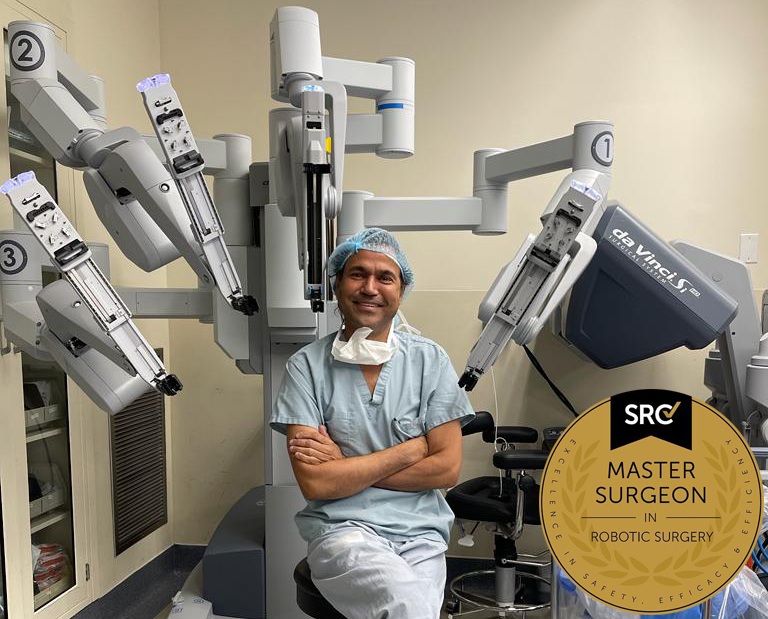提肛综合症
Levator Ani Syndrome is a condition characterized by chronic pain or discomfort in the muscles of the pelvic floor, specifically the levator ani muscles.
The levator ani muscles are a group of muscles that form a sling-like structure in the pelvic region and are responsible for supporting the pelvic organs, including the bladder, rectum, and uterus in females.
The exact cause of Levator Ani Syndrome is often unknown, but it is believed to involve muscular tension, stress, trauma, or nerve irritation. It can result in chronic pain or discomfort in the pelvic region, which may be described as aching, burning, or pressure-like sensations. Pain may worsen with sitting for prolonged periods, sexual activity, or bowel movements.
Levator Ani Syndrome is believed to affect approximately 6 out of 100 individuals, according to researchers. It is thought that certain surgical procedures, such as those used for the treatment and diagnosis of endometriosis, may potentially increase the risk of developing Levator Ani Syndrome.

Levator Ani Muscle. Image source (ShareAlike 4.0 International, 2020).
Causes of Levator Ani
The exact causes of Levator Ani Syndrome are not fully understood, and it is likely multifactorial, involving a combination of factors. Some potential causes or contributing factors that have been proposed for Levator Ani Syndrome include:
Muscular tension: Increased tension or hypertonicity of the levator ani muscles, which are part of the pelvic floor muscles, may play a role in Levator Ani Syndrome. Prolonged or excessive muscle tension in the pelvic floor muscles may lead to muscle spasms, discomfort, and pain.
Nerve irritation: Irritation or compression of the nerves that innervate the levator ani muscles, such as the pudendal nerve or the sacral nerves, may contribute to Levator Ani Syndrome. Nerve irritation can result from various factors, such as trauma, inflammation, or pressure on the nerves.
Stress and anxiety: Psychological factors, such as stress, anxiety, or emotional distress, may impact the pelvic floor muscles and contribute to the development or exacerbation of Levator Ani Syndrome. Increased muscle tension due to stress or anxiety may affect the pelvic floor muscles, including the levator ani muscles.
Previous pelvic surgery: Some studies have suggested that previous pelvic surgery, such as surgeries for endometriosis, hysterectomy, or other pelvic conditions, may be associated with an increased risk of developing Levator Ani Syndrome. Surgical trauma or scar tissue formation may affect the pelvic floor muscles and contribute to the development of symptoms.
Other contributing factors: Other potential factors that may play a role in Levator Ani Syndrome include hormonal imbalances, pelvic trauma, infections, postural or biomechanical issues, and genetic or familial predisposition. However, further research is needed to fully understand the causes and mechanisms of Levator Ani Syndrome.
It’s important to note that Levator Ani Syndrome is a complex condition and may have multiple contributing factors, and the exact causes may vary from person to person. A comprehensive evaluation by a qualified healthcare professional, such as a gynecologist, urologist, or pelvic floor physical therapist, is necessary to determine the individual factors that may be contributing to Levator Ani Syndrome and to develop an appropriate treatment plan.
Endometriosis and Levator Ani Syndrome
While the precise cause of Levator Ani Syndrome is not fully understood, it is believed that endometriosis may elevate the risk of developing this condition. Endometriosis, a condition characterized by inflammation and severe pelvic pain in women, can lead to increased tension and contraction of the pelvic floor muscles, including the levator ani muscles.
Furthermore, certain surgical procedures used to treat endometriosis, such as hysterectomy (removal of the uterus) and low anterior resection of the rectum (removal of part of the rectum), may also potentially increase the risk of developing Levator Ani Syndrome. These surgical procedures may result in trauma or scarring in the pelvic area, which can affect the pelvic floor muscles and contribute to the development of Levator Ani Syndrome. However, further research is needed to better understand the relationship between endometriosis, surgical procedures, and Levator Ani Syndrome.
Symptoms of Levator Ani Syndrome
Levator Ani Syndrome typically presents with chronic or recurring pelvic pain as its primary symptom. This pain is often described as aching, burning, or discomfort in the rectal, anal, or genital areas. It may be intermittent or continuous, and can worsen with sitting, standing, or during bowel movements. Individuals with Levator Ani Syndrome may also experience pain or discomfort during or after bowel movements, which may be accompanied by a sense of incomplete bowel evacuation or rectal pressure.
Involuntary muscle contractions or spasms in the pelvic floor muscles, including the levator ani muscles, may also occur, leading to further pain and discomfort. Some individuals may also experience discomfort during sexual intercourse and urinary or bowel symptoms, such as increased urgency or frequency of urination, constipation, or difficulty emptying the bowels. The chronic pain associated with Levator Ani Syndrome can also cause emotional distress, including anxiety, depression, and reduced quality of life.
Diagnosis of Levator Ani Syndrome
Diagnosis of Levator Ani Syndrome typically involves a comprehensive evaluation by a qualified healthcare professional, such as a gynecologist, urologist, or pelvic floor physical therapist. The diagnosis is based on the individual’s symptoms, medical history, and a physical examination, which may include assessing the location, nature, and duration of pelvic pain, evaluating pelvic floor muscle tone and tenderness, and ruling out other possible conditions that could cause similar symptoms.
Additional diagnostic tests, such as imaging studies (e.g., MRI, CT scan) or specialized tests (e.g., anorectal manometry, electromyography) may be ordered to further assess pelvic floor function and rule out other potential causes. A proper diagnosis is crucial for developing an appropriate treatment plan tailored to the individual’s needs.
Treatment for Levator Ani Syndrome
Surgical intervention is generally not considered as a first-line treatment for Levator Ani Syndrome, as it is primarily a functional disorder of the pelvic floor muscles. However, in some cases where conservative treatments have failed to provide relief, or if there are specific underlying anatomical abnormalities that contribute to the condition, surgical methods may be considered as a treatment option.
The surgical treatment options for Levator Ani Syndrome may include:
Trigger Point Injections
Levator Ani Syndrome trigger point injections are a procedure that involves injecting a local anesthetic, such as lidocaine, into the trigger points in the levator ani muscles, which are localized areas of hyper-irritable muscles. The goal of trigger point injections is to provide temporary relief from muscle tension and pain associated with Levator Ani Syndrome.
The trigger point injections are typically performed by a qualified healthcare professional, such as a gynecologist, urologist, or pain management specialist. The procedure is usually done in an outpatient setting, and the patient may be positioned in a specific way, such as in a lithotomy position, which is similar to the position used during a gynecological exam.
During the procedure, the healthcare provider will use a thin needle to inject a small amount of local anesthetic into the trigger points in the levator ani muscles, which are identified based on the patient’s symptoms and physical examination. The local anesthetic helps to numb the trigger points and temporarily relax the muscles, providing relief from pain and muscle tension.
Trigger point injections for Levator Ani Syndrome are typically performed as part of a comprehensive treatment plan that may also include other conservative measures, such as pelvic floor physical therapy, medication, and lifestyle modifications. The effectiveness of trigger point injections can vary among individuals, and the relief may be temporary. Repeat injections may be needed depending on the individual’s response to the treatment. The decision to undergo trigger point injections should be made in consultation with a qualified healthcare professional, taking into account the individual’s specific condition and overall health.
建议向纽约妇科子宫内膜异位症 (NYGE) 申请预约,以获得准确的费用估算。
Muscle Release Surgery
Muscle release surgery may be considered as a treatment option for Levator Ani Syndrome in cases where conservative measures, such as physical therapy, medications, and trigger point injections, have not provided adequate relief.
The goal of muscle release surgery for Levator Ani Syndrome is to release or alleviate the tension, tightness, or contracture in the levator ani muscles, which can be contributing to the pain and discomfort associated with the condition. The surgical procedure typically involves cutting or releasing the affected muscle fibers or fascia to improve muscle function and reduce pain.
The specific approach and technique used in muscle release surgery for Levator Ani Syndrome may vary depending on the severity and location of the condition. This may include techniques such as myotomy, myofascial release, or tenotomy, depending on the specific needs of the individual patient.
It’s important to note that muscle release surgery for Levator Ani Syndrome is typically considered as a last resort when other conservative treatments have not been effective, and the decision to undergo surgery should be made in consultation with a qualified healthcare provider such as New York Gynecology Endometriosis (NYGE).
Biofeedback
Levator ani biofeedback is a therapeutic technique used to treat Levator Ani Syndrome, which is a condition characterized by chronic pelvic pain caused by tension or dysfunction of the levator ani muscles. Biofeedback is a non-invasive treatment approach that aims to help individuals gain conscious control over the levator ani muscles by providing them with real-time feedback on their muscle activity.
During a levator ani biofeedback session, sensors or electrodes are placed on or near the levator ani muscles to measure their activity. The information is then relayed to the individual through visual or auditory feedback, allowing them to see or hear their muscle activity in real-time. The individual can then learn to modulate their muscle activity based on the feedback provided, with the goal of improving muscle coordination, relaxation, and function.
References
Anatomy, abdomen and pelvis: Levator ani muscle. (October 26, 2022). National Library of Medicine – National Center for Biotechnology Information. https://www.ncbi.nlm.nih.gov/books/NBK556078/
Aredo JV, Heyrana KJ, Karp BI, Shah JP, Stratton P. Relating chronic pelvic pain and endometriosis to signs of sensitization and myofascial pain and dysfunction. National Library of Medicine – National Center for Biotechnology Information. doi: 10.1055/s-0036-1597123
Azzam, H., Halim, M., El-Assaly, H. et al. MRI comparative study of levator ani muscle changes in nulliparous and multiparous females. Egypt J Radiol Nucl Med 50, 56 (2019). https://doi.org/10.1186/s43055-019-0065-0
Biofeedback for somatic conditions. (2022). Johns Hopkins Medicine – Johns Hopkins Healthcare. https://hpo.johnshopkins.edu/doc/fetch.cfm/iQbkLDA2
Christopher R. Chapple (2006). Multidisciplinary management of female pelvic floor disorders. Churchill Livingstone. pp. 4–. ISBN 978-0-443-07272-7
The levator ani (pelvic diaphragm). Copyright 2011 by Lawrence Rizzolo and William Stewart, Yale School of Medicine. http://anatomy.medicine.yale.edu/VisibleHumanLessonPlans/LevatorAni.htm
Tomashev, R., Abbas Shobeiri, S. The levator ani muscle repair: a call to action. Tech Coloproctol 25, 897–899 (2021). https://doi.org/10.1007/s10151-021-02480-1
Pankaj Singhal, MD, MS, MHCM
机器人手术外科医生大师
Pankaj Singhal 博士是全球公认的子宫内膜异位症外科医生,在腹腔镜切除手术方面拥有超过 25 年的专业知识,这使他能够充满信心地应对最具挑战性的子宫内膜异位症病例。 Pankaj 医生治疗患有多种子宫内膜异位症相关疾病的患者,从卵巢子宫内膜异位症到影响肠道和其他器官的严重深部浸润性子宫内膜异位症。
Pankaj 医生优先考虑微创手术并提供全面的个人护理。此外,他还是纽约妇科和子宫内膜异位症 (NYGE) 的所有者和创始人,并一生致力于倡导、尊重和治疗患有这种鲜为人知的疾病的女性。他是全美国少数完成超过 5,718 例机器人辅助妇科手术的外科医生之一。

我们接受大多数主要保险计划
便捷的计费选项,全面覆盖。
手术通常由健康保险承保。然而,承保范围可能会有所不同,具体取决于具体的保险计划和保单。一些保险计划可能涵盖广泛的外科手术,包括选择性和必要的手术,而其他保险计划可能对某些手术有限制或排除。
在某些情况下,某些保险计划或计划可能会全额承担手术费用,使患者无需承担经济责任。
请求预约
New York Gynecology Endometriosis
"*" indicates required fields
